Text

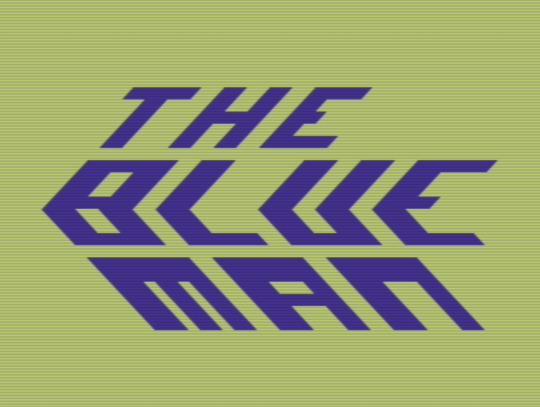


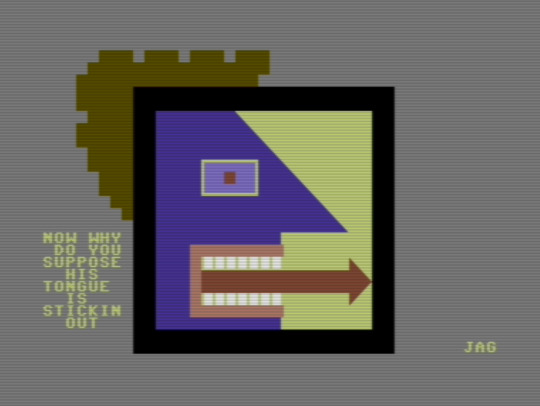

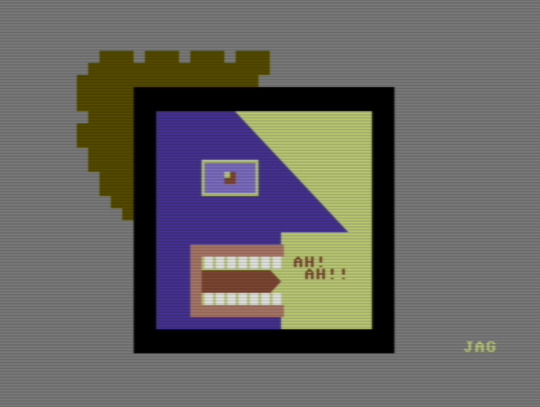
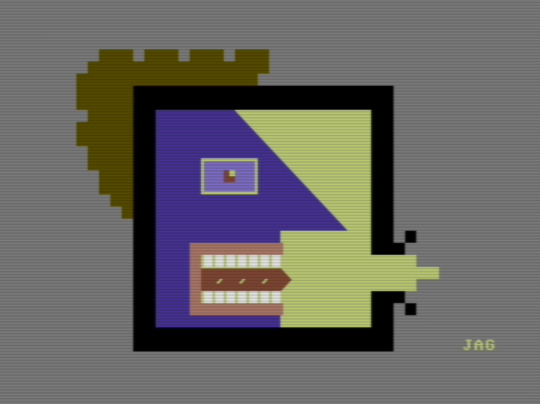
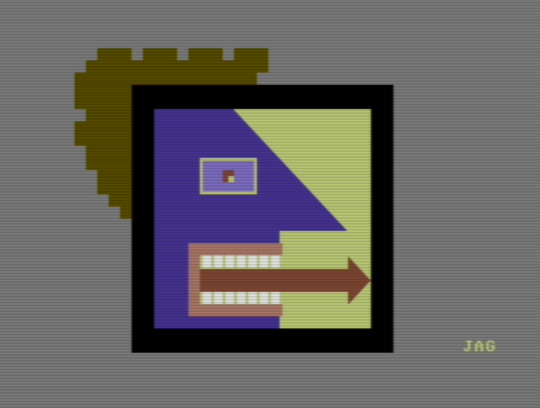

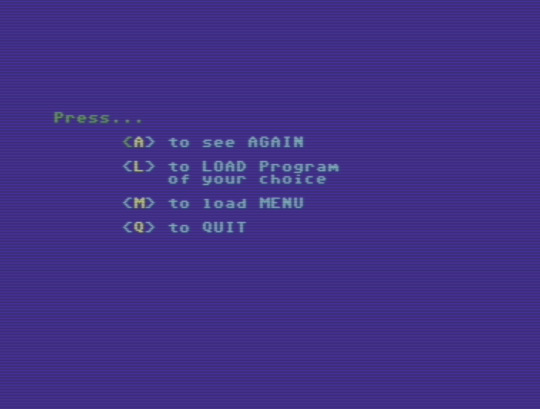
Weird, fun little demo titled, "The Blue Man".
7 notes
·
View notes
Text
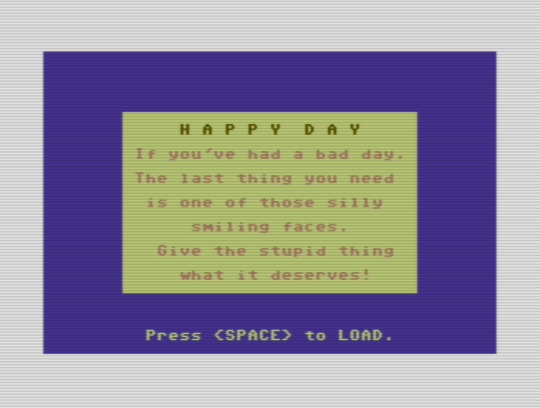
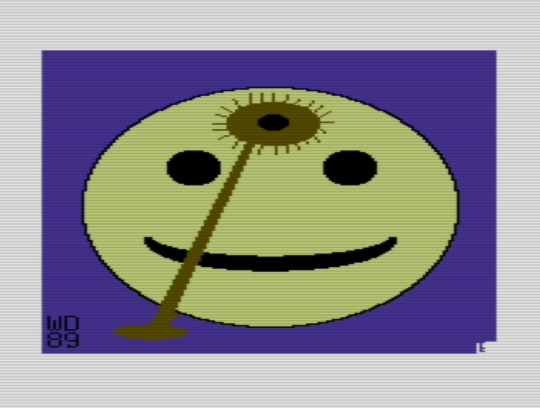
Graphic demo titled "Happy Day".
137 notes
·
View notes
Text
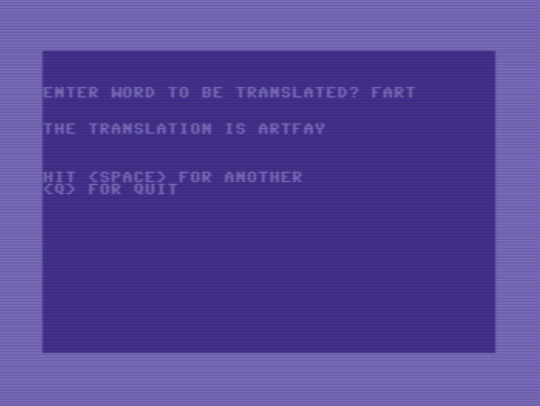
Highly sophisticated Pig Latin translator indie program.
264 notes
·
View notes
Text
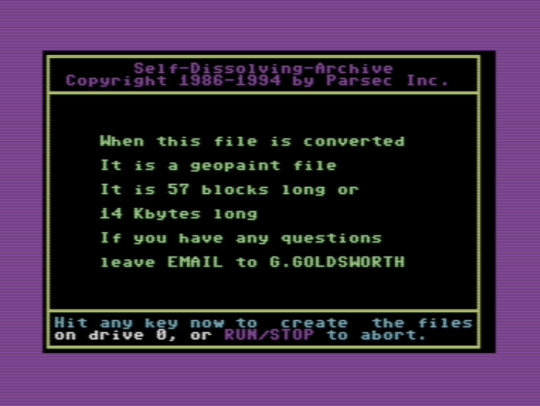
A disk jacket for GEOS disks. I un-crunched the file but was sadly unable to open it.
12 notes
·
View notes
Text
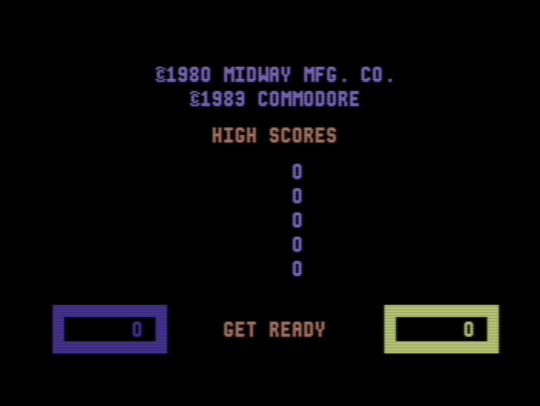
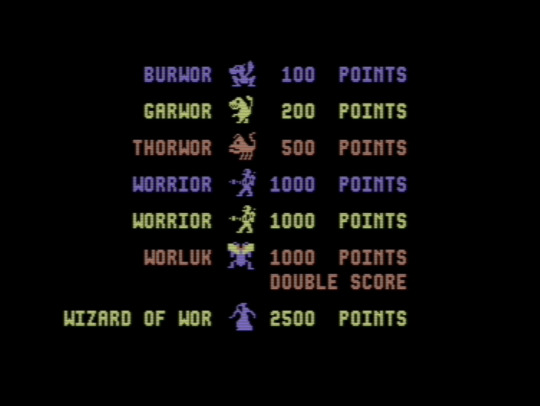

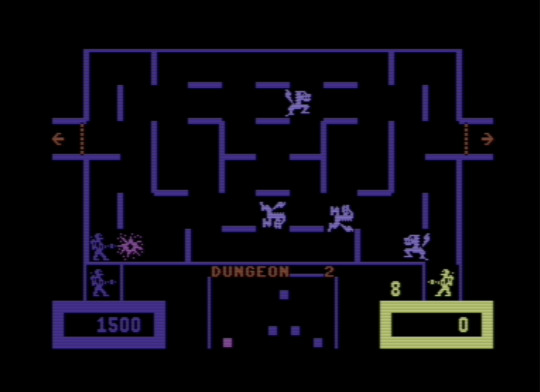
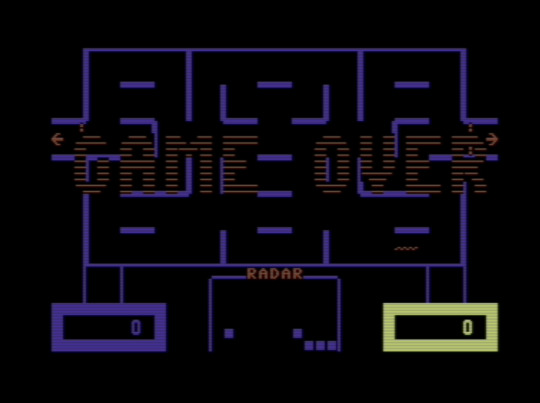
Released in 1980 for arcade, Wizard of Wor quickly became a hit and got ported to Apple II/+, Arcade, Atari 800/XL/XE/2600, the C64, and the Commodore MAX Machine. The gameplay was an addictive mashup between a dungeon crawler and Pac-Man, featuring monster enemies that came in multiple different types and with different abilities, such as one that can turn invisible, to keep gameplay challenging. This was included in among only a few other games that supported the speech output of Commodore's Magic Voice cartridge. With the cartridge in use, the following sentences can be heard during gameplay:
Garwor and Thorwor become invisible! Hahahaha!
Now you get the heavyweights! Hahahaha!
I'm the Wizard, not you!
Reception from critics was warm, with many compliments given to the fidelity of the ports. The 4th Annual Arkie Awards gave it the award for "Best Multi-Player Video Game". A few years later in 1995, Flux Magazine named it 84th on their list of Top 100 Video Games.
And in excruciatingly specific trivia, each dungeon begins with the five-note opening from "Danger Ahead", the theme to the radio and tv series Dragnet. The fifth note only plays upon the "double score dungeon" screen. Also, German Minimal/Electro group Welle: Erdball dedicated a song of the same name on their album "Ich bin aus Plastik" (I am made of plastic) to the game.
54 notes
·
View notes
Text
Hi folks! I received a message from someone who is looking to ID a game they once played. It’s sounds vaguely familiar to me, but it’s not ringing enough bells for me to have a definite conclusion, so if anyone recognizes it, please let us know in the comments. Many thanks!
“Educational game, maybe from MECC
You were in control of some kind of lab with a central playing area and pens along the left and right sides.
You could add things to the central area like barricades and various foods (red, green, cyan foods) and heat, light, noise stimulus sources. It was turn based, you’d set stuff up and then press go and stuff would happen, the goal being to not screw everything up as it got more and more complex.
At various times creatures would be released into the pen and you had to observe them but also keep them safe. Some of the stimuli would be hazardous to some of the creatures and some creatures would eat each other.
I guess it was a game about learning about stimuli and making observations? Akin to Odell Lake?
I remember there was one creature that was very bad, it would eat all foods, eat all other creatures and eat barriers, it basically had to be kept contained.
It seemed pretty cool when I was little in the 1980s. Hopefully it’s a real game and not something I imagined.”
32 notes
·
View notes
Text





Originally released by Sirius Software for the Apple II in 1983 and ported to the C64 the same year, Wavy Navy capitalized on the popular Galaxian game format, with this game set at sea instead of in space. Unlike Galaxian however, this game employs the extra difficulty of putting your ship on large waves so you have no choice but to get closer to the invading airborne army above you in order to eliminate all the targets. Occasionally one of the planes will leave the formation and swoop in random patterns towards you, and once you blow enough of them up one of the helicopters in the top row will come down and aggressively tell you to stop doing that by shooting at you. Getting hit by a plane or the rounds from the copter cause you to dramatically destruct by flying up in the air and then sinking under the waves once you hit the water again. If you manage to clear the screen, mines appear in higher levels to add an extra layer of challenge.
Because Wavy Navy was essentially a reskin of Galaxian, it lost favor with some critics. Others however viewed it as a clever mash-up of games like Galaga and Moon Patrol, and hailed it for this. Its excellent graphics for the time were likewise deservedly recognized. Keen-eyed players may notice that the plane design and movement are almost identical to the player-controlled plane in Save New York, also released in '83.
32 notes
·
View notes
Note
Wie kann ich das spielen?
Ich spreche kein Deutsch, aber ich habe Google Translate nach bestem Wissen und Gewissen verwendet, um dies zu beantworten! Um die hier vorgestellten Spiele zu spielen, benötigen Sie einen Commodore 64-Emulator, der mit dem Betriebssystem Ihres Computers und den ROMs für die spezifischen Spiele, die Sie suchen, kompatibel ist. Es gibt viele Emulatoren und Websites, auf denen ROMs verfügbar sind. Führen Sie einfach eine Suche durch, um diejenigen zu finden, die für Sie am besten geeignet sind.
(Anonymous asked: How do you play these?
I don’t speak German but I have used Google translate to the best of my ability to answer this! in order to play the games you see featured here, you will need a Commodore 64 emulator compatible with your computer’s operating system and ROMs for the specific games you are looking for. There are many emulators and sites that have ROMs available, just do a search to find the ones that work best for you.)
4 notes
·
View notes
Text


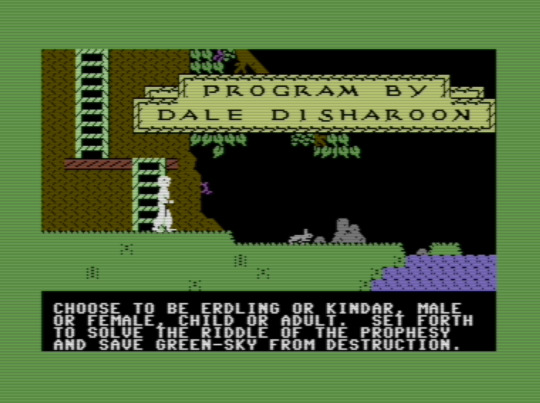

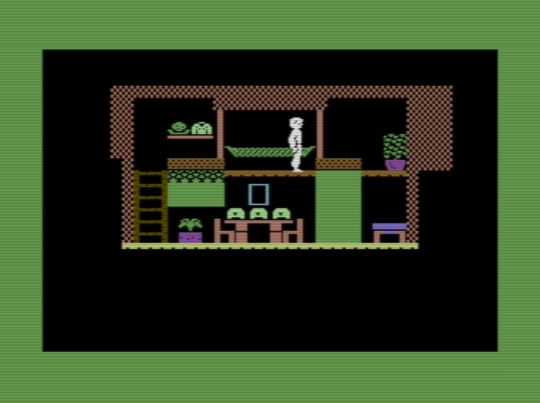
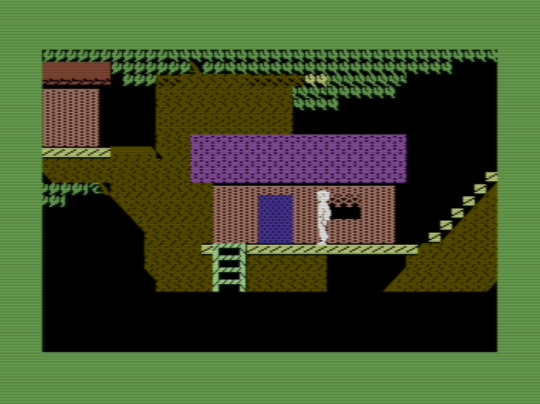

A week or so ago I was browsing a thread on Reddit titled, "What is that one childhood video game that you loved to bits, yet no-one else seems to have ever heard of?" That sort of thing is right up my alley, so I searched through it hoping to find some C64-specific posts and, I did! They are also ones I haven't yet featured, so let's do so!
First up, u/MELMHC posted: "Below the root on C64"
Below the Root was a nice little sidescroller RPG released in 1984 by Windham Classics, a once-division of Spinnaker Software. It's based on a series of fantasy novels titled The Green Sky trilogy by Zilpha Keatley Snyder which were published between 1975-77, which I actually didn't know until now so I looked up the books for more backstory.
In the books, a race of people called The Kindar of Green-sky are a utopian society, ruled by leaders called the Ol-zhaan, who are considered deities. "Unjoyful" emotions like anger and sorrow are banned and kept under strict control by a system of meditation, chant and ritual, accompanied by the use of narcotic berries. The people are vegetarians and surround themselves with pets. Babies are born with paranormal powers, which is kept into adulthood, but were disappearing earlier with each successive generation. The people lived in fear of the forest floor and the pash-shan, legendary monsters said to stalk below the roots of their magnificent tree-cities.
A novice Ol-zhaan named Raamo and his friend Neric (one of the game's playable characters) set out to discover if the monsters truly exist. What they found were the Erdlings, a race made up of exiled Kindar dissidents and their descendants. Where the Kindar live their whole lives in the shade, the Erdlings seek places where the sun penetrates the caverns. They have been living in the caverns and subsisting on plants, mushrooms and the occasional unwary rabbit (lapan) or ground bird, plus fallen fruits from the Kindar orchards. They are superb craftsmen, metalworkers and jewelers; they have fire, which is unknown in Green-sky, and transport people and supplies by railway, using steam propulsion. They have no taboos against anger, sadness or other "unjoyful" emotions, and (possibly as a result) appear to have retained much more of their psychic powers than have the Kindar.
Their discovery shakes the very foundation of Green-sky's social order. The Erdlings are released from their exile and the Ol-zhaan disbanded, but reconciling the two societies takes a long time. An unnamed society of disgruntled Ol-zhaan (called Salite in the game) and the Nekom, vengeance-seeking Erdlings, began patrolling the branch-paths and causing unrest. Furthermore, Raamo himself apparently perished, silencing a voice for tolerance and unity.
In the game's manual, you are told that the wise old woman (and former Ol-zhaan high priestess) D'ol Falla has a vision, in which she heard these words: "The Spirit fades, in Darkness lying. A quest proclaim - the Light is dying." Your character (one of five from the series) then begins the game looking for clues to the meaning of D'ol Falla's vision in hopes of restoring peace to both nations.
The game does a great job in sticking close to details of the books, such as making you unable to steal as that behaviour is banned in the society. To obtain and item you must ask characters for permission to take it, or to pay with tokens you can gain in-game. Also adhering to this, the game was made to be almost entirely non-violent. You can only be hurt by contact with venomous animals, falling, or colliding with a barrier. Your character can also be kidnapped and taken hostage, and collect weapons, which can mostly only be used to cut vine barriers. Killing someone renders the game unwinnable.
The nicely coloured graphics were considered advanced for the time, and competent controls made gameplay easy. The game was well-received, and now has a fanpage for the game and the books up online.
46 notes
·
View notes
Text



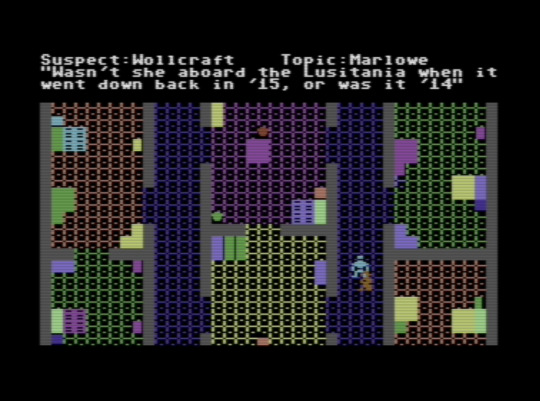

Murder on the Zinderneuf was a great little whodunit game published by Electronic Arts in 1983. Set in 1936, you are a detective (whose persona you have a choice of, with punny names based on fictional literary, film, radio and TV detectives - I chose Inspector Klutzeau, lol) onboard a posh dirigible where a murder has occurred. Much like characters in a dungeon crawler, each detective has a distinct set of strengths and weaknesses. The ship is full of passengers who can be questioned (and accused) and rooms which can be searched for clues. If you wrongfully accuse a suspect, you can no longer interact with them for the remainder of the game, which could negatively impact your ability to gather intelligence. However if you are right, the killer will provide an explanation of their motives and you will be assigned 1 of 6 possible ratings depending on your thoroughness and accuracy. A randomized murderer each time the game is played, along with the wide variety of dialogue and consequences available gives this game high replayability.
The game's replayable value as well as its originality garnered favorable reviews from critics and consumers alike. Small but noticeable details such as the engine noise increasing as the player moved towards the back of the dirigible were also shown appreciation.
44 notes
·
View notes
Text

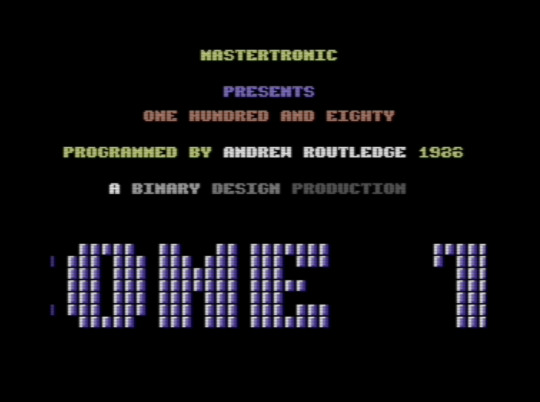
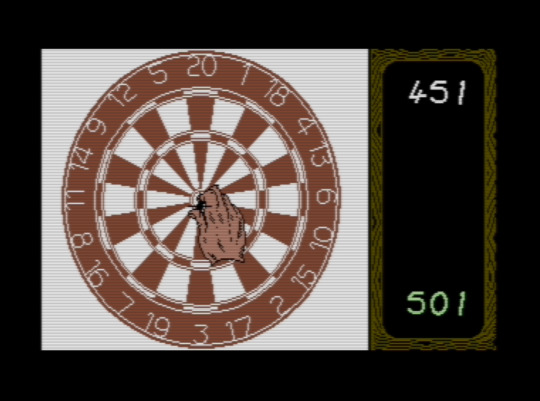
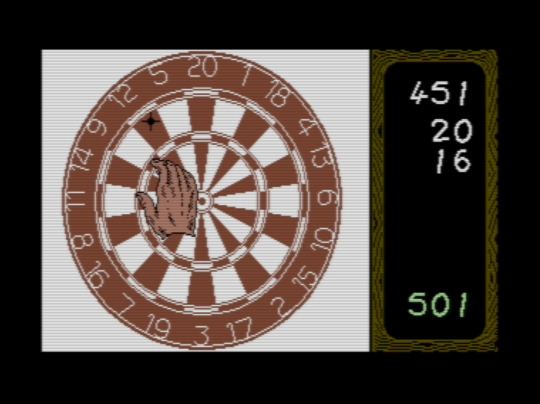

180 was a 501 darts game released by Mastertronic in 1986 for a number of platforms. Normal darts rules apply in this championship tournament. The objective is to win a best of three match, then one match at the semifinals to progress to the final boss, Jammy Jim. If you win just one leg against him you win the tournament. There are 8 opponents you can choose from to play against, all with silly names (Del Boy Desmond, Sure Shot Sidney, Devious Dave, Limp Wrist Larry, Beer Belly Bill, Mega Mick, Tactical Tel, and Jammy Jim).
180 enjoyed a warm reception, with the C64 version getting a 70% rating from ZZAP! Magazine.
24 notes
·
View notes
Text
youtube
Fantastic "Space Movie and Song" Anthony Crowther-involved demo with great music and animation. Essentially a short film at nearly 10 minutes long and complete with credits.
8 notes
·
View notes
Text
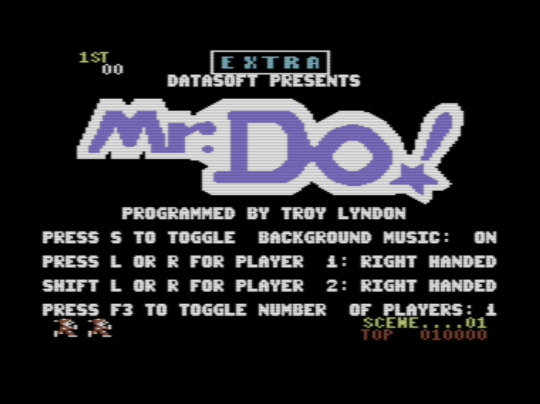
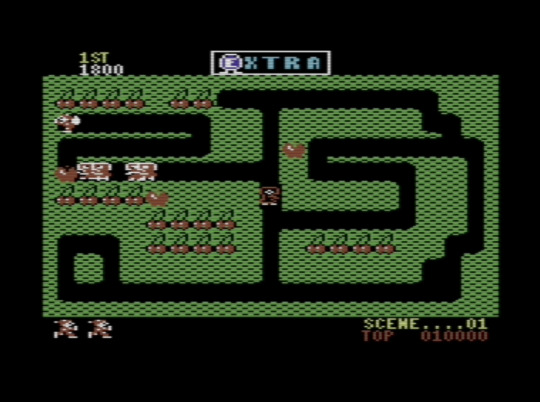


Inspired by Dig Dug, Mr. Do! was a 1982 game available on a number of platforms including the C64. Originating as an arcade game, it was the first arcade videogame to be released as a conversion kit for other arcade machines. The inspiration of Dig Dug is more than just the graphics; the gameplay and mechanics are very similar as well. Instead of inflating these monsters, you clobber them with a ball. If you miss, you must retrieve the ball to use it again. Apples can also be dropped on the monsters to squish them, just like the rocks in Dig Dug.
Mr. Do! Enjoyed a warm reception in Japan and North America, both the arcade game and the ports. Computer and Video Games magazine gave the ColecoVision version a positive 81%. The success of the game spawned 3 sequels in 1983 and 1984.
22 notes
·
View notes
Text
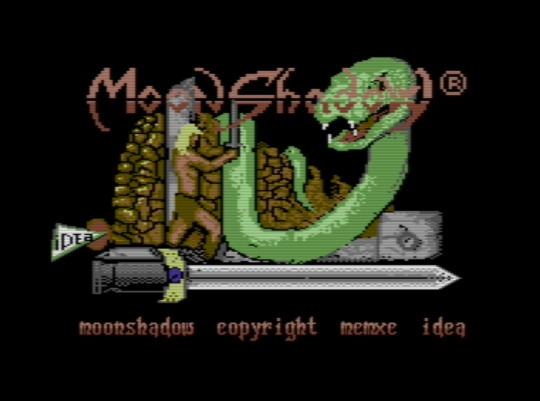
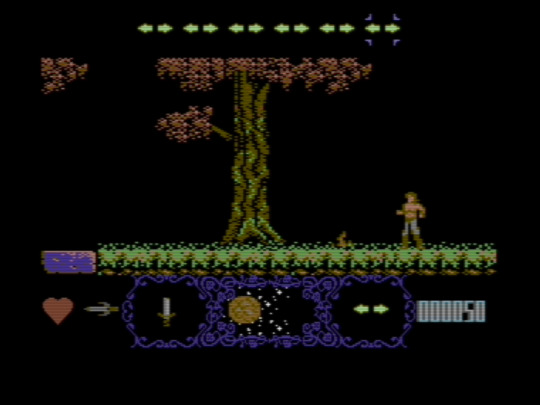


Idea Software's Moonshadow is a dungeon sidescroller with the typical dungeon game format: Run around half naked, kill a bunch of monsters, collect health and new weapons, and gain keys and other items to advance into new areas. The game has all the promises of a hit title: Smooth scrolling, good fighting mechanics, good graphics, nice speed and an exciting soundtrack. Unfortunately one aspect held it back from that: You get only one life and if you die you have to start over from the beginning. Zzap! took note of this and accordingly gave the game only a 65% score. The game's redeeming qualities however helped to make it a fan favorite.
117 notes
·
View notes
Text
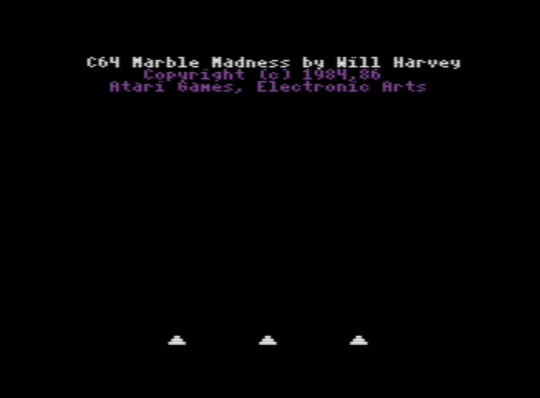

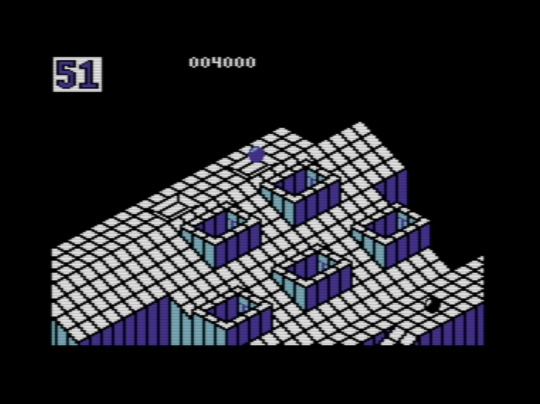

For years I didn't know Marble Madness existed, as I grew up playing its excellent clone, Gyroscope. Having both a unique design and control style, this precision-based puzzle had no issues becoming a very successful game. But these weren't the only firsts: It was Atari's first to use the Atari System 1 hardware, the first to be programmed in C, and one of the first to use true stereo sound - prior games used either monaural sound or simulated stereo.
Originally released to arcades, Marble Madness was ported to multiple systems. As far as the releases across platforms, the Amiga version was hailed as superior to the other versions. Although a big success initially, players began to lose interest around its 7th week following release. It was hypothesized that this could be due to the short gameplay length. It didn't take much time for players to go through the full course and soon master it, losing interest after.
A sequel to Marble Madness was due for release in 1991, but never made it past the testing phase, as it did not hold up to more flashy action games popular at the time such as Street Fighter II.
67 notes
·
View notes
Text

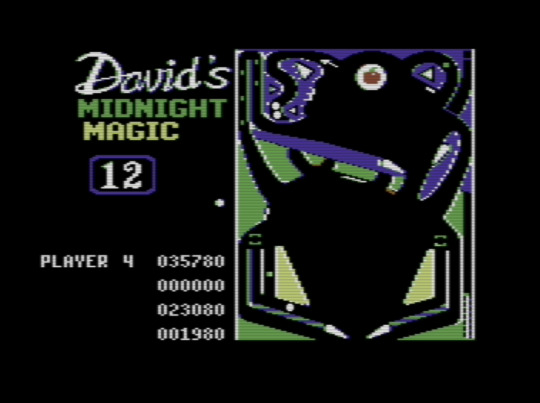

Back in the day if you couldn't get out to the arcade, you had David's Midnight Magic, a well-made pinball simulator originally written for the Apple II in 1982, and ported to several other systems in the years following including the C64. Though not as flashy as a real pinball machine, the pips and blips sounded true to its real life counterpart and a tilt detector was even employed. The game was very well received, winning Computer Game of the Year at the 4th annual Arkie Awards. DMM was writer David Snider's cash cow, netting him in the six figures in royalties. The game design was closely based on an actual pinball table called Black Knight which was released in 1980.
37 notes
·
View notes
Text

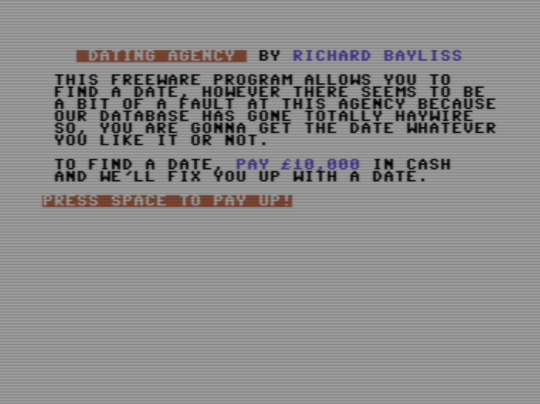

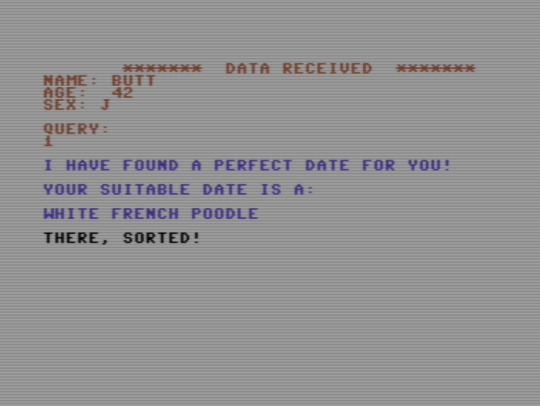
Do you need a date? You're in luck. Dating Agency is an indie program that will find you the perfect date. Just like it found mine which is actually a dog.
36 notes
·
View notes